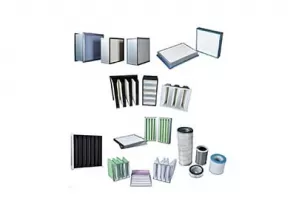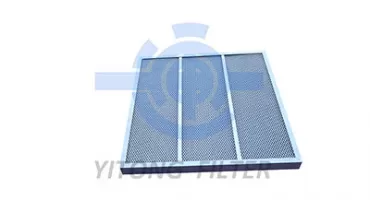 December 12, 2024
December 12, 2024
HEPA (High-Efficiency Particulate Air) filters are essential for maintaining clean indoor air, trapping pollutants such as dust, allergens, and microorganisms. While these filters are highly effective, they require regular maintenance to sustain their performance. Cleaning your HEPA filter properly ensures it remains efficient and extends its lifespan. This guide will walk you through the process of cleaningHEPA filters safely and effectively.
Not all HEPA filters are washable. Before attempting to clean your filter, consult the product manual or check the manufacturer's instructions. HEPA filters are typically classified into two types:
1. Washable HEPA Filters: These are designed for cleaning with water.
2. Non-Washable HEPA Filters: These require gentle cleaning methods, such as vacuuming, and cannot be exposed to water.
Using the wrong cleaning method can damage the filter and reduce its effectiveness.
For safety, ensure the device containing the HEPA filter (e.g., air purifier or vacuum cleaner) is turned off and unplugged before you begin.
Carefully remove the filter from the device. This process varies by model, so refer to the user manual for specific instructions. Handle the filter gently to avoid tearing or damaging the filter material.
Check the filter for visible dirt, dust, or signs of wear. Excessive dirt buildup or damage may indicate that the filter needs replacing rather than cleaning.
For Washable HEPA Filters:
1. Rinse with Water:
- Hold the filter under lukewarm running water.
- Rinse the filter from the clean side to the dirty side to prevent debris from lodging deeper into the filter.
2. Avoid Soap:
- Do not use soap or detergents, as they can leave residues that may block airflow.
3. Dry Thoroughly:
- Shake off excess water and place the filter in a well-ventilated area to air dry.
- Ensure the filter is completely dry before reinstalling it, as moisture can promote mold growth.
For Non-Washable HEPA Filters:
1. Vacuum the Filter:
- Use a vacuum cleaner with a soft brush attachment to gently remove dust and debris from the filter surface.
- Avoid applying too much pressure, as this could damage the delicate filter material.
2. Tap to Loosen Dirt:
- Lightly tap the filter against a solid surface to dislodge trapped particles.
Once the filter is clean and completely dry, place it back into the device. Ensure it is securely fitted to maintain proper airflow and filtration efficiency.
Cleaning a HEPA filter can help prolong its life, but it will eventually need to be replaced. Most manufacturers recommend replacing the filter every 6–12 months, depending on usage and environmental factors. Monitor the filter's condition regularly and follow the manufacturer’s guidelines.
Tips for Optimal Filter Performance
- Use in Clean Environments: Minimize exposure to heavy pollutants to extend the filter’s life.
- Schedule Regular Maintenance: Clean the filter as part of your regular household cleaning routine.
- Invest in Quality Filters: High-quality HEPA filters tend to last longer and perform better.
Proper cleaning and maintenance of your HEPA filter are crucial for keeping your indoor air quality at its best. Following the steps above will help ensure your filter operates efficiently and lasts as long as possible. Always prioritize safety and adhere to the manufacturer’s recommendations for the best results.
Let me know if you’d like further details or a more specific focus on HEPA filter maintenance!
 Dec. 24, 2024
Comprehensive Guide to Common Questions About Cleanroom Filters
Dec. 24, 2024
Comprehensive Guide to Common Questions About Cleanroom Filters
 Jul. 04, 2023
Standards for Primary, Medium, and HEPA Filters - Choosing the Right Air Filter for Different Environmental Needs
Jul. 04, 2023
Standards for Primary, Medium, and HEPA Filters - Choosing the Right Air Filter for Different Environmental Needs
 Jul. 24, 2023
What is a high-temperature resistant primary efficiency filter, and what are its functions?
Jul. 24, 2023
What is a high-temperature resistant primary efficiency filter, and what are its functions?

